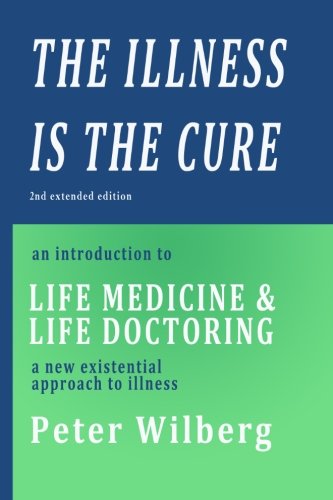How
Biomedical Diagnosis
can Damage Your Health
Diagnostic screening
“Diagnosis may exclude a human being
with ‘bad’ genes from being born, another from promotion, and a
third from political life. The mass hunt for health risks begins with
dragnets designed to apprehend those needing special protection …
Health testing … was welcomed as the poor man’s escalator into
the world of Mayo [the Mayo Clinic] and Massachusetts General …
[yet] studies indicate that these diagnostic procedures – even when
followed up by high-level medical treatments – have no positive
impact on life-expectancy … in any case, it transforms people who
feel healthy into patients anxious for their verdict.” Ivan
Illich
Example: screening of men for higher than
normal age-levels of PSA (Prostate Specific Antigen) of a sort which
may indicate the presence of cancer of the prostate.
Diagnostic statistics
“By equating statistical man with
biologically unique men, an insatiable demand for finite [medical]
resources is created … the right of the patient to withhold consent
to his own treatment vanishes as the doctor argues that he must
submit to diagnosis, since
society cannot afford the burden of curative procedures that would be
even more expensive.”
Example: enormous pressure is placed on
men with high PSA levels to undergo intrusive needle biopsies in
order to extract cell samples for analysis and confirm the presence
of cancerous cells – even though such biopsies produce many ‘false
negative’ results, and even positive results allow no firm
prognostic conclusions to be
drawn whatsoever.
That is why one reading of the acronym
PSA is ‘Producer of Stress and Anxiety’.
Diagnostic screening statistics
Example: Two large, long-awaited
studies [reported by the New England Journal of Medicine] failed to
produce convincing evidence that routine prostate -cancer screening
significantly reduces the chances of dying from the disease without
putting men at risk for potentially dangerous and unnecessary
treatment. The PSA blood test, which millions of men undergo each
year, did not cut the death toll from the disease in the first decade
of a U.S. government-funded study involving more than 76,000 men,
researchers reported yesterday.
In the U.S. study, researchers randomly
assigned 76,693 men ages 55 to 74 at 10 centres to receive either six
annual screenings consisting of PSA testing and physical examinations
or whatever their doctors recommend, which could include screening.
After seven years, 22 percent more
prostate cancer s were diagnosed in the PSA group, and 17 percent
more were diagnosed after 10 years. But there was no significant
difference in deaths from the cancer in the two groups. The
researchers noted there were actually more deaths overall in the
screened group – 312 vs. 225 – and they could not rule out that
the excess may have been the result of overtreatment.
The second study, a European trial
involving more than 162,000 men that was released simultaneously, did
find fewer deaths among those tested. But the reduction was
relatively modest, and the study showed that the screening resulted
in a large number of men undergoing needless, often harmful
treatment. Stein, Rob Philadelphia
Inquirer, 2009
Diagnostic stress
and isolation
“Diagnosis always intensifies stress,
defines incapacity, imposes inactivity, and focuses apprehension on
non-recovery, on uncertainty and on one’s dependence on future
medical findings, all of which amounts to a loss of autonomy … It
also isolates a person in a special role, separates him from the
normal and healthy, and requires submission to the authority of
specialised personnel. Once a society organises for a preventative
disease-hunt, it gives epidemic proportions to diagnosis. This
ultimate triumph of therapeutic culture turns the independence of the
average healthy person into an intolerable form of deviance.” Ivan
Illich
Example: the diagnosis of prostate cancer
– like any form of cancer – produces an unhealthy degree of
anxiety and stress, fear and uncertainty of a sort which makes the
individual more likely to passively submit to medical authority and
with it to dangerous and damaging forms of further diagnostic testing
and/or treatments such as chemo- or radio-therapy – all of which,
in the case of prostate cancer, drastically reduce quality of life
whilst bringing no definitive ‘cure’ and often requiring further
repeated and debilitating treatments.
Diagnostic error
“Diagnostic bias in favour of sickness
combines with frequent diagnostic error. Medicine not only imputes
questionable categories with inquisitorial enthusiasm; it does so at
a rate of miscarriage that no court system could tolerate. In one
instance, autopsies showed that more than half the patients who died
in a British university clinic with a diagnosis of specific heart
failure had in fact died of something else.” (Illich, ibid.)
Example: many men die with
prostate cancer even though they have not died from it.
Diagnostic damage
and ‘iatrogenesis ’
Example: many forms of diagnostic testing
are potentially dangerous and damaging in themselves. In the case of
prostate cancer biopsies they not only accentuate the very symptoms
that first led them to be done (e.g. urinary difficulties, production
of blood in the urine) or produce infections of the prostate. Should
cancerous cells be found, the biopsy procedure itself increases the
likelihood of these cells spreading to other parts of the body –
thus helping to realise the worst possible outcome and prognosis of a
malignant tumour through the very procedure of diagnosis itself. In
this way diagnosis itself becomes a form of iatrogenesis
– medically generated
disease. As for actual treatments of prostate cancer, in a large
proportion of cases these can result not only in the generally
debilitating effects of such therapies but also in permanent
impotence.


No comments:
Post a Comment